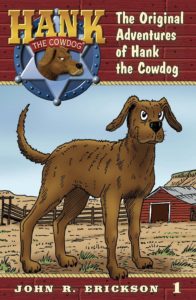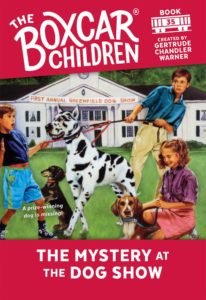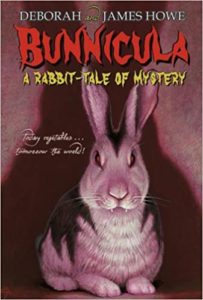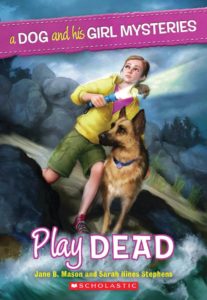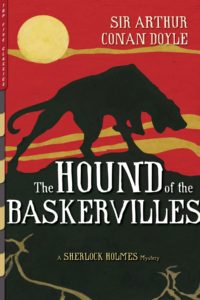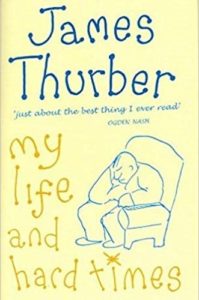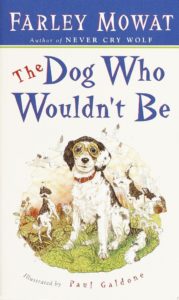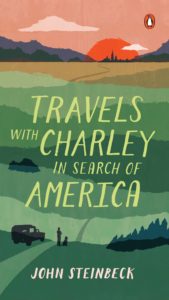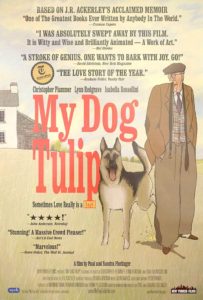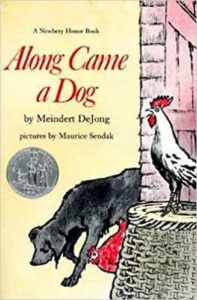 |
Meindert DeJong’s Newbery Honor book Along Came a Dog (HarperCollins, 1980) is the lovely and heartwarming story of a friendship between a homeless dog and a lonely little red hen. For ages 6-11. |
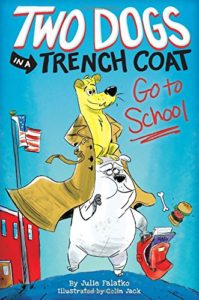 |
In Julie Falatko’s Two Dogs in a Trench Coat Go to School (Scholastic, 2018) – the first of a series – Sassy and Waldo, creatively disguised in a trench coat, set out to save their boy, Stewart, from school. For ages 7-10. |
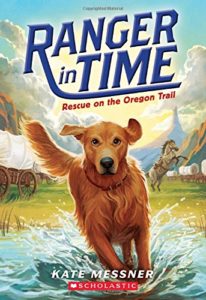 |
Kate Messner’s Ranger in Time series (Scholastic, 2015) features a time-traveling golden retriever – and failed search-and-rescue dog; he simply can’t resist squirrels. Helpful Ranger visits everything from ancient Rome to the Oregon Trail. An exciting and history-filled series for ages 7-10. |
 |
Tom Watson’s Stick Dog (HarperCollins, 2020), the first of a series, follows the hilarious adventures of the Stick Dog and friends – here, in pursuit of hamburgers. For ages 7-12.
For activities and info about the books, see the Stick Dog website. |
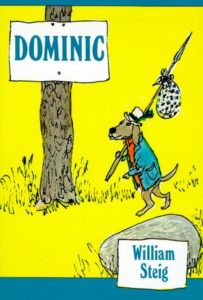 |
In William Stieg’s Dominic (Square Fish, 2007), Dominic – a dog – packs his hats and his piccolo and heats out to see the world, where he soon encounters the villainous Doomsday Gang. For ages 8-11. |
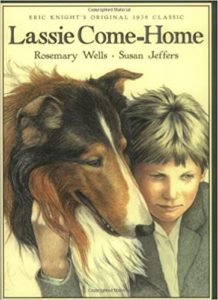 |
Eric Knight’s Lassie Come Home (Square Fish, 2007), originally published in 1940 and now available in many editions, has led to movie versions and a television series. The book features Lassie, the prize collie belonging to young Joe Carraclough, who has to be sold when the family falls into hard times. Taken to the north of Scotland by her new owner – the Duke of Rudling – Lassie escapes and makes the long trek home to Joe. For ages 8 and up. |
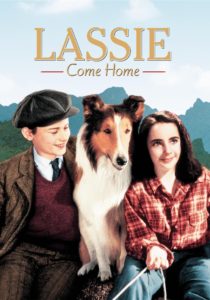 |
The 1943 film version of Lassie Come Home stars Roddy MacDowell as young Joe and Elizabeth Taylor as Priscilla, the Duke’s sympathetic daughter. Rated G. |
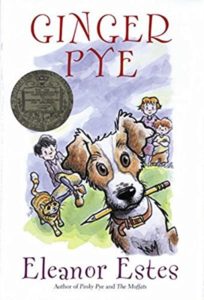 |
In Eleanor Estes’s Ginger Pye (Houghton Mifflin Harcourt, 2000), siblings Jerry and Rachel Pye love their dog Ginger, the smartest dog ever. Then – on Thanksgiving Day – Ginger is stolen. For ages 8-12. |
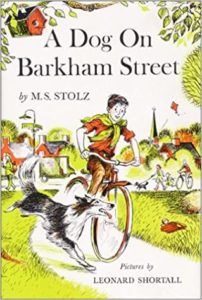
|
Check your library for Mary Stolz’s A Dog on Barkham Street (HarperCollins, 1960) – it’s out of print, but worth tracking down. Main character Edward Frost wants just two things: to be free of neighborhood bully Martin Hastings and to have a dog. Then his wandering on-the-road Uncle Josh shows up with a dog – Argess – who adopts Edward as his boy. For ages 8-11. |
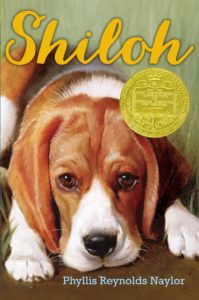
|
In Phyllis Reynolds Naylor’s Newbery winner Shiloh (Atheneum, 1991), 11-year-old Marty Preston, growing up in rural West Virginia, finds an abused beagle puppy. Knowing that the puppy will be mistreated if returned to its rightful owner – the rotten Judd Travers – Marty struggles with moral values and a determination to protect the dog he has come to love. For ages 8-12. |
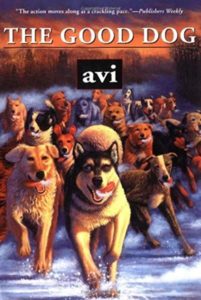 |
Avi’s The Good Dog (Atheneum, 2003) is written from the point of view of a malamute named McKinley, head dog in the community of Steamboat Springs, Colorado. McKinley’s life changes dramatically when he meets the greyhound Duchess, an abused runaway trying to evade her owner, and Lupin, a wolf, trying to recruit dogs to join her pack. He also has to deal with the aggressive setter, Redburn, who wants to take McKinley’s place as head dog. An exciting story populated with very real dogs. For ages 8-12. |
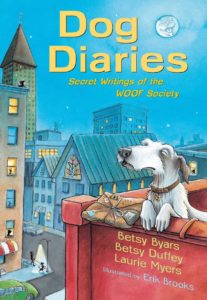 |
By Betsy Byars, Betsy Duffey, and Laurie Myers, in Dog Diaries: Secret Writings of the WOOF Society (Henry Holt and Company, 2007), the dog members collect assorted stories from dogs from all places and times. (WOOF stands for “Words of Our Friends.”) For ages 8-12. |
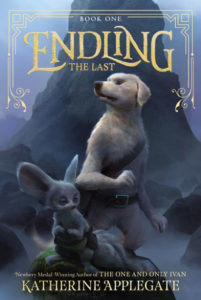 |
Katherine Applegate’s Endling trilogy (HarperCollins, 2019), features Byx, youngest and last of her daime pack – a mythical doglike species – who sets off to seek others of her kind, meeting human and animal allies along the way. A wonderful fantasy series for ages 8-12. |
 |
In Dodie Smith’s 101 Dalmatians (Puffin, 1989), originally published in 1956, Pongo and Missis Pongo’s fifteen puppies have been kidnapped by Cruella de Vil and taken to her ancestral home, Hell Hall, where she plans to have them skinned and made into fur coats. Pongo and Missis discover their whereabouts with the help of the dogs’ communication network (“Twilight Barking”) and head off to rescue their brood, along with all the other Dalmatian captives at the Hall. Much better than the movie. For ages 8-12. |
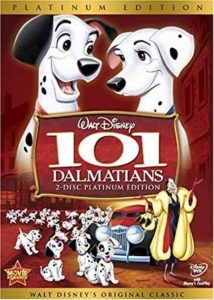 |
Film versions include the 1961 Disney animation. Rated G. |
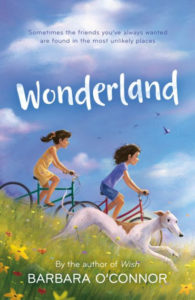 |
In Barbara O’Connor’s Wonderland (Square Fish, 2019), Mavis’s mother has moved her from place to place all her life – most recently to Landry, Alabama, where she’s taken a job as housekeeper to the Tully family. There Mavis forms a friendship with Rose, the Tully daughter, and the two join forces to find a new dog for Mr. Duffy, who has been brokenhearted since losing his longtime pet, Queenie. The solution may be Henry, a runaway greyhound that the girls find hiding in the wood. Told from the alternating perspectives of Mavis, Rose, and Henry. For ages 8-12. |
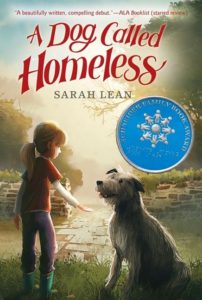 |
In Sarah Lean’s A Dog Called Homeless (Katherine Tegen Books, 2014), 11-year-old Cally’s mother has died; her father, grief-stricken himself, is unable to help; and so Cally, convinced that nothing she says matters, has given up talking altogether. Then she starts seeing visions of her mother, accompanied by a large dog, who also shows up in company with a homeless man, Jed, in the park. Then Cally, her father, and older brother Luke, move into an apartment, where Cally befriends Sam – blind and nearly deaf – and his mother. Eventually with the help of friends, family, and a dog, Cally begins to heal. For ages 9-12. |
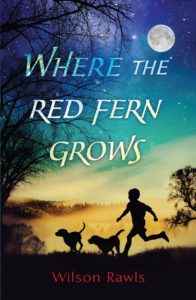 |
By Wilson Rawls, Where the Red Fern Grows is the story of ten-year-old Billy Coleman, growing up in the Ozarks, with his two coonhounds, Old Dan and Little Ann. It’s a powerful and emotional story with a tragic ending – though Billy eventually finds some comfort in the native American legend of the red fern. For ages 9 and up. |
 |
There are at least two film versions, one from 1974, rated G; another, from 2003, rated PG. The first seems to be better liked by viewers. |
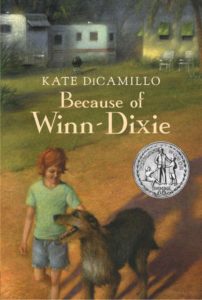 |
In Kate DiCamillo’s Newbery Honor book Because of Winn-Dixie (Candlewick, 2009), ten-year-old Opal and her preacher father have just moved to the little town of Naomi, Florida, when Opal finds a homeless and homely dog at the Winn-Dixie grocery store. She names the dog after the store – and the pair proceed to make friends with guitar-playing, ex-convict, pet store owner Otis; librarian Miss Franny Block, whose great-grandfather invented Litmus Lozenges; and even Gloria Dump, who just might possibly be a witch. A great story about life, people, and dogs, with a wonderful cast of characters. For ages 9-12. |
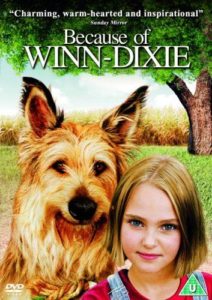 |
The film version of Because of Winn-Dixie (2005) is rated PG. |
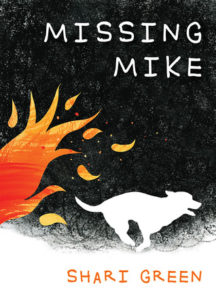 |
In Shari Green’s Missing Mike (Pajama Press, 2018), Cara’s family has been forced to flee their home in the wake of a wildfire – and in the haste and confusion, Cara’s beloved dog Mike has been left behind. But Cara insists he survived and is determined to find him. For ages 9 and up. |
 |
In Rob Buyea’s What Comes Next (Delacorte, 2021), twelve-year-old Thea, traumatized by the loss of her best friend in an accident, gradually heals with the help of Jack-Jack, a rescue dog. For ages 9-12. |
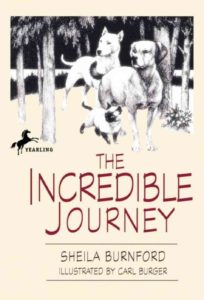 |
Sheila Burnford’s now-classic The Incredible Journey (Yearling, 1997) is the story of two dogs – Luath, a young Labrador retriever and Bodger, an elderly bull terrier – and Tao, a Siamese cat, who join forces to survive a harrowing trek across the Canadian wilderness to find their owners. For ages 9-12. |
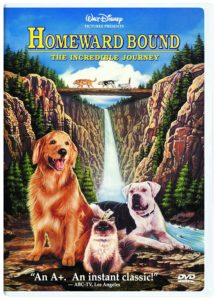 |
Homeward Bound: The Incredible Journey (1993) is a re-make of the original movie, made in 1963. The new version is set in California. Rated G. |
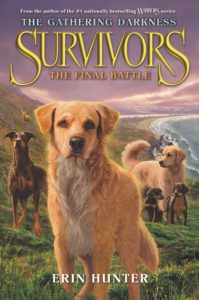 |
In Survivors (HarperCollins, 2013), Erin Hunter – author(s) of the Warriors and Seekers animal fantasy series – turns her collective attention to dogs. A series for ages 9 and up. |
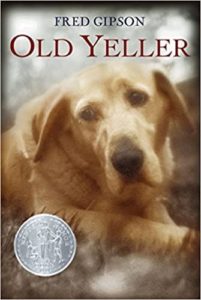 |
Fred Gipson’s Old Yeller (HarperPerennial, 2009) has been breaking hearts since it was first published in 1956. In charge of the family ranch while his father is off on a cattle drive, young Travis adopts a mongrel yellow dog, who proves himself a hero many times over, saving the family from bears, hogs, and – tragically – a rabies-infected wolf, who gives Old Yeller the disease. There’s a positive end (Old Yeller fathered puppies), but it’s still a tearjerker. For ages 10 and up. With tissues. |
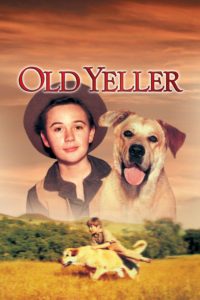 |
The Disney film version of Old Yeller (1957) stars Dorothy McGuire, Fess Parker, and Tommy Kirk. |
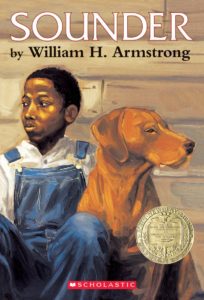 |
In William H. Armstrong’s Newbery winner Sounder (HarperCollins, 2002), Sounder is the loyal hound belonging to a family of black sharecroppers in the Depression-era South. When the father of the family is arrested for stealing, Sounder is shot and disappears, and the oldest son of the family – who desperately wants to learn to read – is left to support the family as best he can. Ultimately father and dog come home, and – though the ending is sad – the family finds healing. For ages 10 and up. |
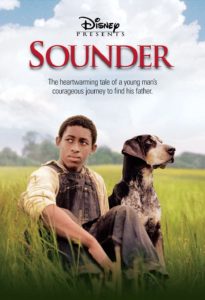 |
The film version of Sounder (1972) is rated G and stars Cicely Tyson, Paul Winfield, and Kevin Hooks. |
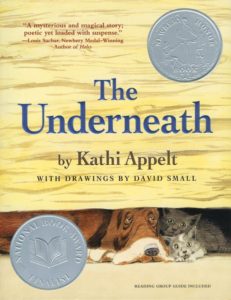 |
In Kathi Appelt’s The Underneath (Atheneum, 2010), Ranger – a hound – shelters a cat and her kitten beneath the porch, saving them from Gar-Face, his evil master. A magical and wonderful story, populated with legendary creatures of the bayou – the Alligator King and Grandmother Moccasin, who lives trapped in a buried jar. For ages 10 and up. |
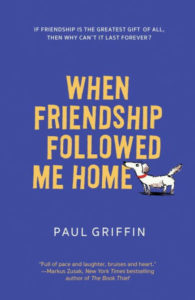 |
In Paul Griffin’s When Friendship Followed Me Home (Puffin, 2017), Ben Coffin, the narrator, has had a tough time in the foster-care system, though he’s helped by the little dog, Flip, who follows him home, and by Halley, the girl he meets at the library. The pair train Flip as a therapy dog while Halley, who has cancer, struggles with chemotherapy. It’s a tearjerker, but also a hopeful story of love and resilience. With a dog. For ages 10 and up. |
 |
In Tom Rogers’s Eleven (Alto Nido Press, 2014), Alex turns eleven on September 11, 2001 – and for his birthday he wants a dog. He finds and connects with a little stray dog – but his birthday this year is fraught with emotion and terror, as Alex worries about his father, who drives a train to the World Trade Center. Told from three different points of view, a well-done story of an unforgettable and tragic disaster. For ages 10 and up. |
 |
I have to sympathize with Wallace Wallace, star of Gordon Korman’s No More Dead Dogs (Disney-Hyperion, 2002). Hyper-honest eighth-grade football player Wallace has had it with books in which the dog dies, and so refuses to write a favorable book report about the current class read, Old Shep, My Pal. As punishment, Wallace is forced to attend rehearsals of the Drama Club’s production of Old Shep – and finds that he has a lot of suggestions. Snappy, funny, and the dog – in Wallace’s hands -makes it. For ages 11-14. |
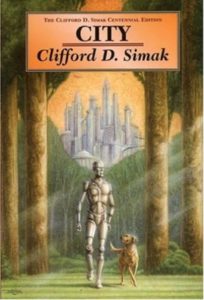 |
Clifford Simak’s City (Ace, 1952) is a collection of eight stories set in the distant future in which human beings have left Earth, leaving behind only robots and a population of now highly evolved and articulate dogs. Check your library. For ages 13 and up. |
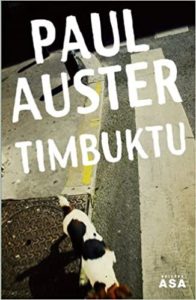
|
Paul Auster’s Timbuktu (Picador, 2009) is the story of a schizophrenic homeless man, Willy Christmas, and his dog, Mr. Bones. Willy is dying, and so sets off on a trek from Brooklyn to Baltimore to find his former high-school English teacher, hoping to find both a home for his dog – and for the collection of manuscripts that he has written and stashed at the Greyhound bus terminal. The story is told from the point of view of Mr. Bones. For older teenagers and adults. |




































